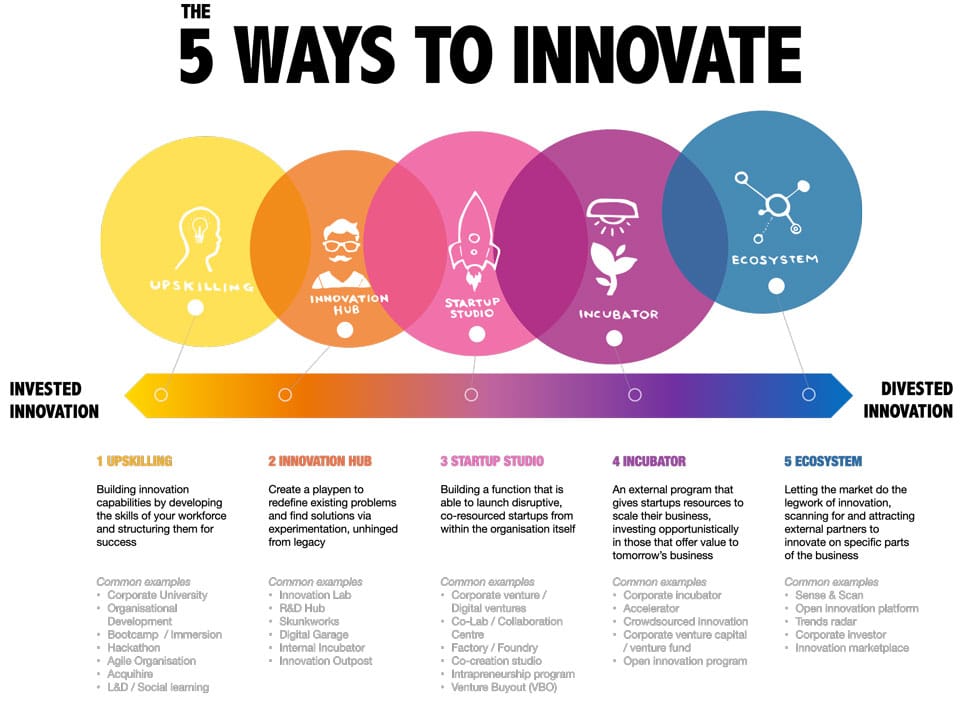The single most important factor that determines whether a company will succeed at innovation

“Companies have never placed a higher priority on innovation – yet they have never been as unready to deliver on their innovation aspirations.” This excerpt from the 2024 edition of BCG’s annual Most Innovative Companies report paints a divided picture of the state of corporate innovation. On the one hand, companies are investing more in innovation today than ever before. This is not surprising in the context of economic headwinds and a rapidly shifting technology landscape, driven by the Artificial Intelligence (AI) boom. It’s just good business sense to invest in initiatives that help your organization evolve and keep pace. Yet, these investments are becoming less and less effective. What gives?
As innovation consultants, my fellow co-founder Roshan Chhotu and I deal with leadership teams every day who are grappling with a dilemma: how can they zoom out and focus time, energy and resources on the challenge of reinventing their business, while simultaneously keeping the lights on in an increasingly challenging environment? It sometimes seems like a magic trick is required, and the available advice is unnecessarily complex. So, we made it our mission to help these leaders make sense of what works, what doesn’t and some simple shifts that can make a big difference. Here’s what we found.
The state of corporate innovation
The facts are a good starting point to offer us a deeper insight into what is going on. Over the last three years of BCG’s annual innovation report, the number of companies stating that innovation is one of their top three priorities has grown from 75% to 83%. Innovation has become one of the highest agenda items for most companies on the planet.
However, in the same timeframe, we’ve seen the number of companies who actually possess the capabilities to execute on their innovation ambition drop from 20% to just 3%. Clearly, the challenge for leaders who are driving the innovation agenda is no longer convincing their C-suite and board of “why we should innovate”, but rather coming up with an effective strategy to solve for “how we should innovate.”
To put it bluntly, the “innovation gap” for most companies between their ambition and their capability is large – and growing.
The results of this growing gap are evident; a Capgemini report stated that 80-90% of innovation centers are failing. Such a low success rate would rarely be tolerated in other departments of most companies. For those leaders in charge of the innovation agenda, it’s a warning that simply “doing what we’ve always done” is no longer a viable strategy. Something needs to change.
How can companies close the innovation gap?
By studying over 100 companies, we discovered that most failures occurred because of a lack of structured innovation systems. Our findings showed that the best innovators on the planet focus on just five simple categories of innovation tactics. When a system is used to link innovation tactics to the company’s strategy, the gap begins to close. These successful innovation systems share three key characteristics:
- Suitability
Those companies who were most successful at innovation weighted their investments towards tactics that were suited to their specific strengths – and away from their weaknesses. For example, some companies had leadership teams who were heavily invested in the innovation process, actively involved on a day-to-day basis in internally focused initiatives like employee upskilling and innovation labs. Other organizations lacked the capabilities to actively drive the process but were able to offset this by focusing on externally driven innovation through incubators and ecosystem investments; rather than letting their limitations hold them back, they let the market do the legwork. Getting this balance right between “invested” and “divested” innovation tactics is a key indicator of success. - Breadth
Successful innovators don’t treat innovation like a project, but rather manage it like a portfolio. The most successful innovators have a number of different initiatives “always on”, across a broad spectrum of the five most common ways to innovate. There is a direct correlation between the breadth of an organization’s innovation portfolio and their ability to generate impact. For example, the top ranked innovators in the world have multiple initiatives across all five of the most common ways to innovate. For more traditional companies with smaller innovation budgets, even increasing the breadth of their innovation efforts from one to two or three initiatives provides outsized benefits on effectiveness. - Depth
We discovered a multitude of ways that companies measure and place value on their innovation efforts. The most common misstep we found in this area was focusing on the wrong time-horizon, either measuring innovation on short-term financial metrics, or success metrics that are too distant, difficult to measure and attribute. In the case of the most successful innovators, they are much more focused on the tangible outputs of innovation. We were able to boil these down to three key outputs: if the innovation efforts resulted in the launch of new features, offerings or businesses, it was likely to be more successful.
In short, our findings show that the single most important indicator of whether a company will succeed at innovation is whether or not they have a structured innovation system in place. Even better if the system is linked to a strategy that embraces the three key characteristics of suitability, breadth and depth.

Unsurprisingly, BCG’s latest innovation report backs up these findings. Their recommendation for leaders looking to get innovation efforts back on track? “We’d argue for a reboot that starts by establishing—or strengthening—the link between innovation strategy and business strategy.”
How can leaders close the innovation gap?
We’ve collectively spent the last 30+ years leading innovation at some of the world’ most successful companies. In that time, we’ve helped dozens of Fortune 500 companies build the business of tomorrow. Based on this work, as well as our analysis, we developed the 5 Ways to Innovate system. It’s designed to be a simplified view to help leaders develop a winning innovation portfolio that’s suited to the specific goals and traits of their organization.
Innovation has never been higher on the corporate agenda. Through the use of structured systems like 5 Ways to Innovate, we’ve seen companies of all sizes and verticals lift their innovation capabilities, boost the effectiveness of their innovation investments, and begin to close the innovation gap.
As part of our mission to help 1,000 corporates reinvent themselves, we have developed a free innovation health check to give leaders a scorecard of how effective their organization’s innovation investments are, as well as recommendations for areas of improvement. 5waystoinnovate.com/healthcheck
Written by Amer Iqbal.
Bring the best of the CEOWORLD magazine's global journalism to audiences in the United States and around the world. - Add CEOWORLD magazine to your Google News feed.
Follow CEOWORLD magazine headlines on: Google News, LinkedIn, Twitter, and Facebook.
Copyright 2025 The CEOWORLD magazine. All rights reserved. This material (and any extract from it) must not be copied, redistributed or placed on any website, without CEOWORLD magazine' prior written consent. For media queries, please contact: info@ceoworld.biz








